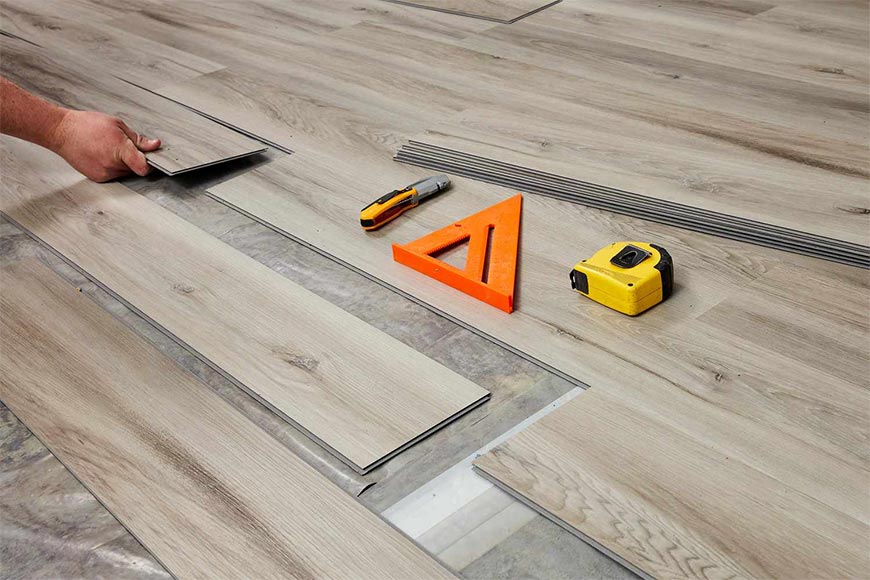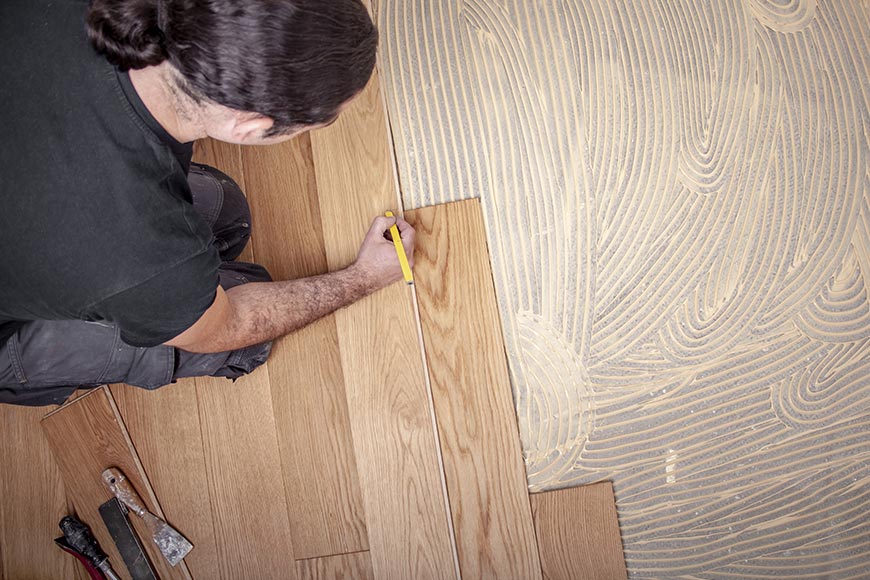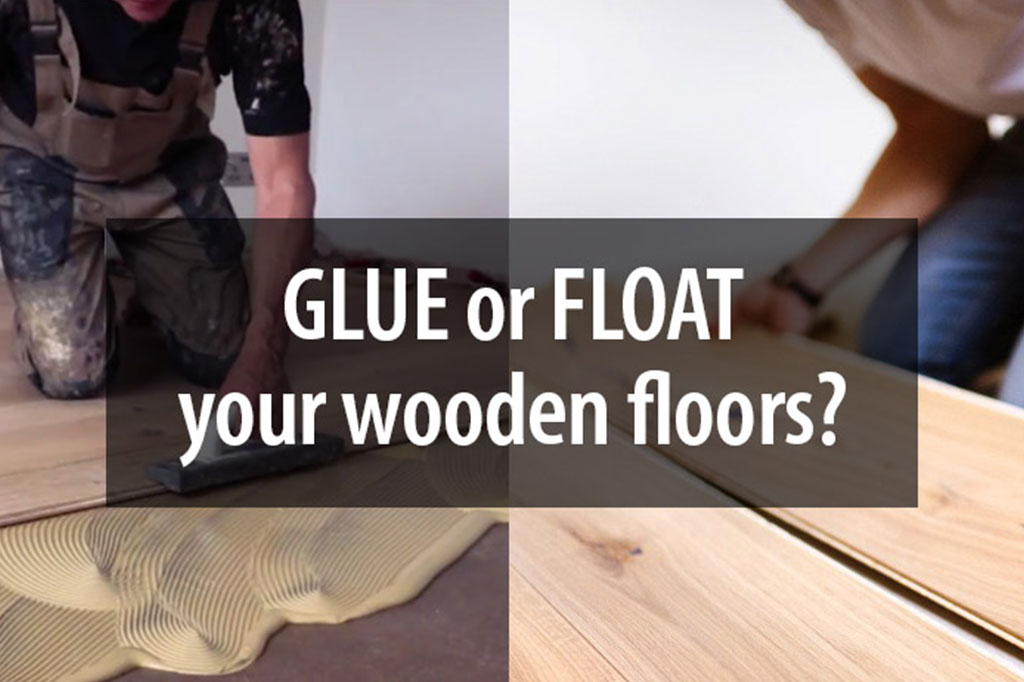Engineered hardwood flooring offers a distinct advantage with its simple installation process, appealing to skilled DIY enthusiasts who prefer installing their own floors.
There are primarily two methods to consider: floating or glue-down. The best choice depends on various factors, including the specific conditions of your home, the type of subfloor present, and your personal preferences and requirements for your flooring.
It’s crucial to assess each method thoroughly to make a well-informed decision. Consider the unique benefits and potential drawbacks of both floating and glue-down installations. I hope the following guidance will be helpful to you!
- Installation Processes
- Advantages of Each Method
- Disadvantages of Each Method
- Suitability and Recommendations
- Different Maintenance

Table of Contents
ToggleComparison of Installation Methods
Comparing the installation methods for engineered hardwood flooring—specifically the glue-down versus floating approaches—can help in deciding which option best suits your needs.
Engineered Glue-Down Hardwood Flooring
- Preparation: This method requires a well-prepared and perfectly level subfloor. Any imperfections can affect the final result.
- Process: Adhesive is applied directly to the subfloor, and the engineered hardwood planks are then placed on top and pressed down to adhere securely.
- Time and Skills: Glue-down installation is labor-intensive and requires a certain level of skill to ensure the adhesive is evenly applied and the planks are correctly aligned.
Pros | Cons |
|
|
Floating Engineered Wood Flooring
- Preparation: Requires a clean and level subfloor, but is more forgiving of minor imperfections than the glue-down method.
- Process: Planks are connected to each other via a click-lock system or tongue-and-groove mechanism but are not attached to the subfloor.
- Time and Skills: This method is less labor-intensive and can often be done as a DIY project.
Pros and Cons of Floating Engineered Hardwood Flooring
Pros | Cons |
|
|
Suitability and Recommendations
Engineered Glue-Down Hardwood Flooring
- High-Traffic Areas: Ideal for commercial spaces or busy areas in homes due to its robustness and stability.
- Over Concrete: Excellent for installation directly over concrete subfloors, such as in basements, because it can handle minor moisture fluctuations with the appropriate moisture barrier.
- Large Open Spaces: Preferred in areas where minimal floor movement is desired, ensuring a solid feel underfoot without shifts or creaks.
- Professional Installation: Due to the complexity of the adhesive application and the need for a perfectly level subfloor, professional installation is recommended.
- Acoustic Consideration: In multi-story buildings or units where sound reduction is important, glue-down flooring offers better acoustic dampening.
- Longevity and Maintenance: Opt for glue-down if the goal is a long-term, durable solution with less need for frequent repairs.
Floating Engineered Wood Flooring
- Residential Settings: Especially suitable for homes where quick installation and future floor changes might be desired.
- DIY Projects: A popular choice for DIY enthusiasts due to the simplicity of installation with click-lock systems.
- Areas with Seasonal Humidity Changes: Works well in homes where the subfloor might expand and contract since the floating floor is designed to move slightly.
- Use of High-Quality Underlayment: To enhance stability and reduce sound transmission, investing in good underlayment is crucial.
- Temperature and Humidity Control: Ensure the indoor environment maintains consistent humidity and temperature to prevent warping or gapping.
- Quick Renovation: Ideal for projects needing a fast turnaround or temporary solutions where minimal subfloor preparation is desired.

Different Maintenance
Engineered Glue-Down Hardwood Flooring
- Routine Cleaning: Similar to floating floors, glue-down flooring should be kept clean with regular sweeping or vacuuming. Mopping should be done with a slightly damp mop and an appropriate wood floor cleaner.
- Moisture Management: Glue-down floors have better resistance to moisture from the top surface compared to floating floors, as there are no gaps between the subfloor and the wood where moisture can accumulate. However, it is still crucial to avoid excessive water on the surface.
- Repair and Replacement: Repairing or replacing pieces of a glue-down floor can be more challenging than with a floating floor. Since the planks are adhered to the subfloor, removing a damaged plank without affecting the surrounding planks requires careful cutting and removal.
- Protection from Scratches and Wear: Like floating floors, enhance the longevity of your flooring by using protective pads under furniture and placing area rugs in high-traffic areas.
Floating Engineered Wood Flooring
- Routine Cleaning: Floating floors can be vacuumed or swept to remove dirt and debris. Use a damp mop with a mild cleaner for more thorough cleaning, ensuring not to overwet the floor to avoid water seeping into the seams.
- Preventing Water Damage: Because floating floors do not adhere to the subfloor, it’s important to clean up spills quickly. If water accumulates, it can penetrate the seams and lead to swelling or warping along the panel edges.
- Repair and Replacement: One of the advantages of floating engineered wood flooring is the ease of replacing damaged panels. Since the planks are not glued or nailed down, individual planks can usually be removed and replaced without disturbing the entire floor.
- Protection from Scratches and Wear: Prevent scratches and wear by using furniture pads under legs and placing rugs or mats in high-traffic areas.
When choosing between engineered glue-down and floating engineered wood flooring, your decision will largely depend on your specific needs for durability, installation ease, and maintenance. If you have any questions, please come to the Major and we will provide you with free consulting services.

